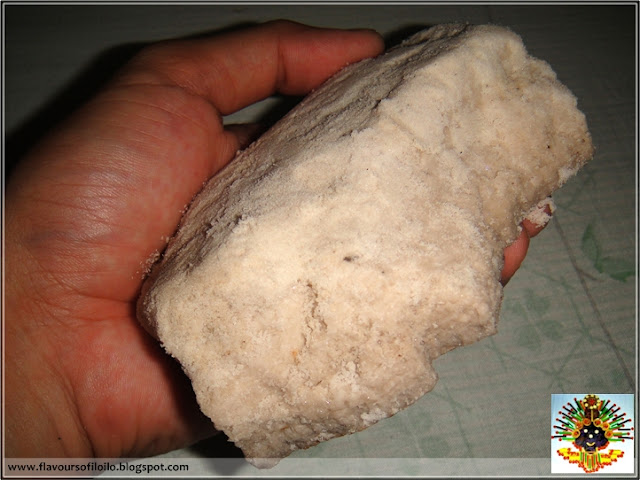My fascination with tultul started when I read about it on Food Magazine. And thanks to Mr Eugene Jamerlan for this tultul that I actually now hold in my hand. This kind of salt is not a staple at home and searching about it online brought me to an article published on The News Today written by the late historian Prof. Henry Funtecha.
He writes;" Tultul-making in Hoskyn is an age-old tradition. According to the Ganila couple, both their families have been engaged in the craft for generations. Their grandparents and parents were known far and wide as "masters" of tultul-making in Guimaras. The market for tultul is not a problem because there is a high demand for it in both Panay and Negros Occidental. In fact, buyers from both islands come to Hoskyn to purchase tultul, except that the Ganila couple cannot sustain the supply. To get a better return, sometimes Emma peddles the tultul in the nearby municipalities of Guimaras and Iloilo during their market days." Read More
I was ecstatic have been given this block of salt a few days ago so I can finally share it to the rest of the world. Upon seeing this many many of my Facebook followers reminisce about this being part of their younger days - all pointing to how tultul was part of their gastronomy. They share how hot rice is being "dabbed" with this rock salt and then a few drop of cooking oil be added to have have an already complete meal.
Continuing Mr, Funtecha's article, he pens; "Tultul-making has become a rarity nowadays. There are only very few surviving "masters of the trade" in Western Visayas at present. In Guimaras, the traditional craft is kept alive by the husband-and-wife team of Serafin and Emma Ganila, both 55 years of age, whose residence is in Hoskyn. According to the couple, they are the only ones engaged in the manufacture of tultul in Guimaras today. In fact, their expressed main concern is that they are afraid that eventually tultul will disappear because no one from among their children is interested in continuing the tradition. The reason is that the process of making tultul is long and tedious, and requires hard work and discipline. Also, it cannot be done throughout the year because of the low salinity of seawater and lack of raw materials during the rainy season. Thus, it is limited only to the months of December to May, a period of six months."
Tultul is sold at the souvenir shop near the Guimaras Capitol and during the tultul making season, one may contact the Ganila Family or the Guimaras Tourism Office to see how this age old traditional salt making is done.




